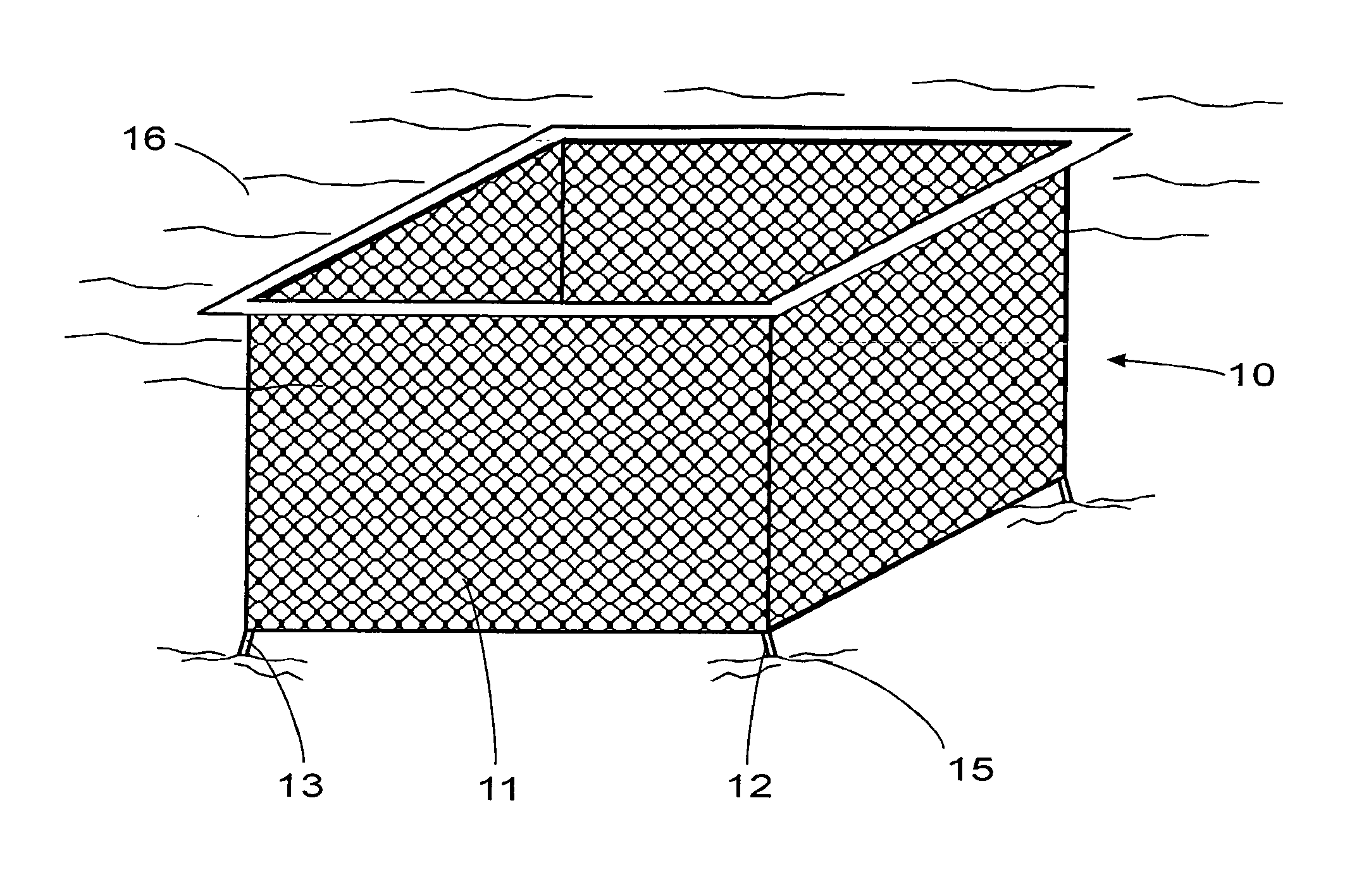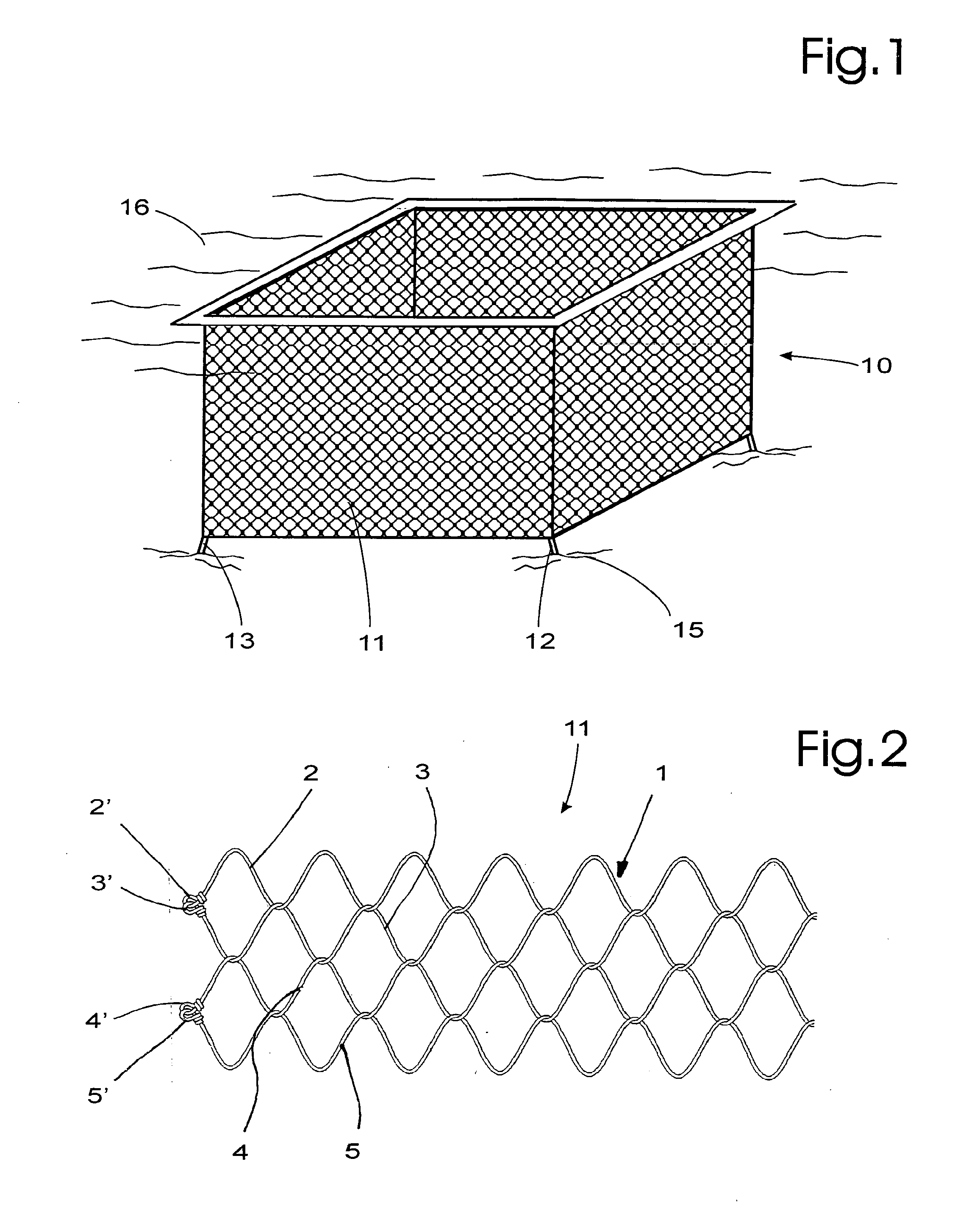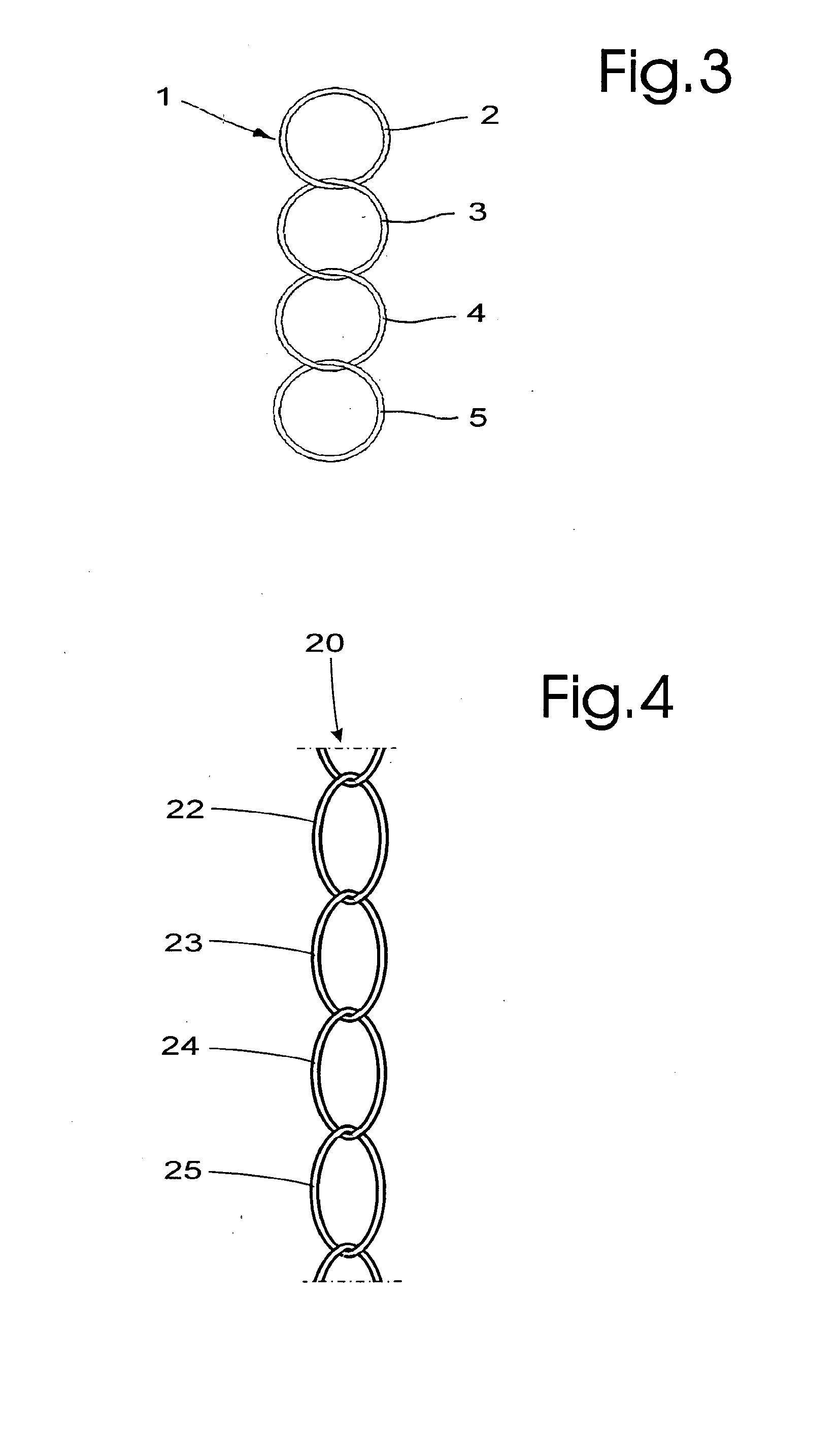Method for producing a net, in particular for a basket for pisciculture
- Summary
- Abstract
- Description
- Claims
- Application Information
AI Technical Summary
Benefits of technology
Problems solved by technology
Method used
Image
Examples
Embodiment Construction
[0020]FIG. 1 shows a diagrammatically illustrated basket 10 which is placed in water 16 here and is particularly intended for pisciculture. The basket 10 is formed from a net 11 and is preferably fixed to the sea bed 15 by attachment means 12, 13, and the basket 10 extends upwards to the surface of the water. Depending on the depth of the water, currents, the tidal range and soil characteristics there are also floating versions with different types of attachment to the ground or the land and respective combinations of the latter.
[0021]This basket 10 is rectangular in form here, but it can of course also be of a different shape. The basket 10 can be formed in different shapes here, for example, it can be round or square or polygonal. For certain applications, it is likewise advantageous if the basket 10 can also be closed at the bottom and / or at the top. Depending on the incubation phase, smaller baskets can also be placed inside larger baskets, it being possible to provide different...
PUM
 Login to View More
Login to View More Abstract
Description
Claims
Application Information
 Login to View More
Login to View More - R&D
- Intellectual Property
- Life Sciences
- Materials
- Tech Scout
- Unparalleled Data Quality
- Higher Quality Content
- 60% Fewer Hallucinations
Browse by: Latest US Patents, China's latest patents, Technical Efficacy Thesaurus, Application Domain, Technology Topic, Popular Technical Reports.
© 2025 PatSnap. All rights reserved.Legal|Privacy policy|Modern Slavery Act Transparency Statement|Sitemap|About US| Contact US: help@patsnap.com



